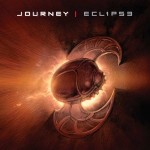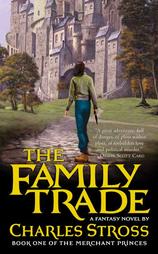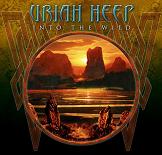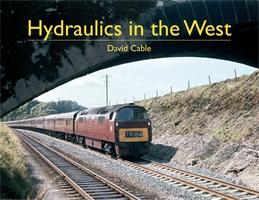 There are two prevailing myths about the Western Region’s diesel hydraulics locomotives. The first, propagated by partisan anti-Swindon types is that the whole project was a disastrous failure motivated by ex-GWR types wanting to be different purely for the sake of it. The second, propagated by Swindon’s own fans, is that the decision to phase out the diesel-hydraulics was a purely political one, intended to curb the Western Region’s independent spirit.
There are two prevailing myths about the Western Region’s diesel hydraulics locomotives. The first, propagated by partisan anti-Swindon types is that the whole project was a disastrous failure motivated by ex-GWR types wanting to be different purely for the sake of it. The second, propagated by Swindon’s own fans, is that the decision to phase out the diesel-hydraulics was a purely political one, intended to curb the Western Region’s independent spirit.
Written with the assistance of senior engineers from both BR’s Western Region, and from Voith, in this book David Clough attempts to reveal the some of the truth behind the myths. The story that emerges turns out to be a lot more complex.
David Clough starts with the early history of diesel traction in the UK, going back to the days of the Big Four and covering technological dead-ends such as the GWR gas turbines and infamous Fell diesel-mechanical No 10100, which gets an entire chapter all to itself. We then get an overview of the experience of diesel-hydraulics in Germany, which gives us the background to the choices faced by British Railways in 1955 when they decided to embark on a crash course of dieselisation.
The meat of the book covers the design and service lives of the locomotives themselves, comparing the Western Region’s hydraulic fleet with the equivalent diesel-electrics delivered to other regions, and later to the Western Region itself. A major conclusion is that, despite what’s often been written, there’s little evidence of any inherent superiority for either diesel-electrics or diesel-hydraulics transmissions, and there was a much greater difference between successful and unsuccessful designs with the same type of transmission. Of the diesel-hydraulic designs, the Westerns come in for a lot of criticism over design flaws that dogged them throughout their lives, and it’s suggested that this is a major cause of the diesel-hydraulic’s poor reputation in some quarters. In contrast, the Hymeks in particular emerge as successful and reliable locomotives, bettered in their power class only by English Electric’s class 37s.
Some of the less successful diesel-electric classes get off lightly. The ill-fated North British class 21s do get a mention, along with the fact that some got rebuilt at great cost with Paxman engines only to be outlived by their hydraulic equivalents equipped with troublesome original MANs right to the end. But the failure of classes like the Metrovick Co-Bos and the Baby Deltics is rather glossed over, and the fiasco of the Clayton class 17s, which numbered over 100 yet had shorter lives than any hydraulic classes doesn’t even get a mention. The class 24s/25s, numbering over four hundred yet withdrawn after working lives of under 20 years, little more than the longer-lived hydraulics, only get mentioned in passing.
In the end, the real reason for the premature withdrawal of the Western Region’s diesel hydraulics turns out to be a matter of economics rather than politics. The Beeching closures of the mid-60s left the railway with far more locomotives than were needed, and it made economic sense to rationalise both the number of types, and close some works, including Swindon. Had things panned out differently, it’s not inconceivable that some classes, most notably the Hymeks, might have had considerably longer working lives. Some of their German equivalents are still in traffic today.
The book recognises that the story doesn’t end with the withdrawal of the last of the “Westerns” in 1977, but continues into the following decades with the widespread adoption of hydraulic transmissions for the second generation of multiple units. Indeed, the author notes how experiences with the “Westerns” influenced the design of the 125mph class 180 “Adelantes” a generation later. It closes with the fact that diesel-hydraulic locomotives are still being built in Germany, and the age of the hydraulic is far from over.
As is typical in large-format books from this publisher, it’s extensively illustrated, with something like 150 black and white photos, mostly from the 1960s and 1970s.
Available from the Ian Allen website.



 If they’ve heard more than one song, the general public only know Journey for their radio-friendly power ballads. But rock fans have always been aware of the other side of the band; the classy hard-rock outfit capable of filling quite major venues with their high energy live shows. In their eighties heyday there was sometimes a tension between these two aspects of their music. Interviews suggested the record company constantly demanding more ballads while at least some of the band wanted to rock out rather more. With less commercial pressure nowadays to be radio-friendly, this, like many of their recent albums, shows more of the hard rock Journey rather than the commercial power-ballad Journey.
If they’ve heard more than one song, the general public only know Journey for their radio-friendly power ballads. But rock fans have always been aware of the other side of the band; the classy hard-rock outfit capable of filling quite major venues with their high energy live shows. In their eighties heyday there was sometimes a tension between these two aspects of their music. Interviews suggested the record company constantly demanding more ballads while at least some of the band wanted to rock out rather more. With less commercial pressure nowadays to be radio-friendly, this, like many of their recent albums, shows more of the hard rock Journey rather than the commercial power-ballad Journey.



 There are two prevailing myths about the Western Region’s diesel hydraulics locomotives. The first, propagated by partisan anti-Swindon types is that the whole project was a disastrous failure motivated by ex-GWR types wanting to be different purely for the sake of it. The second, propagated by Swindon’s own fans, is that the decision to phase out the diesel-hydraulics was a purely political one, intended to curb the Western Region’s independent spirit.
There are two prevailing myths about the Western Region’s diesel hydraulics locomotives. The first, propagated by partisan anti-Swindon types is that the whole project was a disastrous failure motivated by ex-GWR types wanting to be different purely for the sake of it. The second, propagated by Swindon’s own fans, is that the decision to phase out the diesel-hydraulics was a purely political one, intended to curb the Western Region’s independent spirit.